$1149 (See note at bottom of review)
5 Stars
Product of the year already? Kramer discovers Rotel’s wonder box more than justifies its bells and whistles accoutrements.
THERE’S A THEORY that says a minimalist amplifier has to sound better than one loaded with bells and whistles or a fancy chassis. This theory makes a great deal of sense because every feature has to be paid for from the overall parts budget, but if all that money is instead spent on the bits that make the music, well then they should be higher quality bits.
A good example of minimalism sounding superb is Perreaux’s little SX25i integrated amp, which is nothing more than a basic bent metal chassis and a faceplate containing high-quality components. It’s a single source amp, so the only controls are the power switch and a volume knob. There’s no real power on hand, let alone a remote control, or even a headphone jack, but the thing sure can play a song or 15. I owned one for years and sold it to a friend in a fit of magnanimity that I regret to this day.
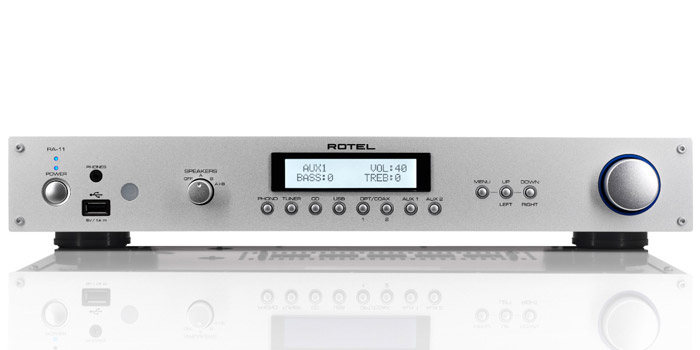 The Rotel RA-11 being reviewed here is the opposite of the Perreaux. Where the SX25i is hair shirt stark in its feature set, the Rotel packs everything including the kitchen sink, and it manages this for similar money. Logically, the audio quality has to suffer, right? Wrong. So very, very wrong.
The Rotel RA-11 being reviewed here is the opposite of the Perreaux. Where the SX25i is hair shirt stark in its feature set, the Rotel packs everything including the kitchen sink, and it manages this for similar money. Logically, the audio quality has to suffer, right? Wrong. So very, very wrong.
Features & Construction
Where to start with the features? Well, at its heart the RA-11 is a modestly powered Class AB integrated amplifier offering 40 watts into 8 ohms. It’s built around a chassis that’s pretty much standard for a stereo component in terms of depth and width (342 x 430 mm respectively) but at only 72 mm high, it looks svelte on a hi-fi rack.
That slim chassis manages to contain four line-level analogue RCA inputs, MM phono stage, speaker A/B outputs and a 3.5 mm headphone output. Par for the course so far, but then the RA-11’s list stretches to a built-in 24/192 capable DAC (based on Wolfson’s WM8740 chip) with two optical and two coaxial inputs, and there’s a front mounted Apple-certified USB input to allow direct connection of i-devices. By some miracle of resource allocation, the RA-11 is also supplied with a tiny USB dongle that turns the USB input into that most modern of audio products, a wireless Bluetooth streamer.
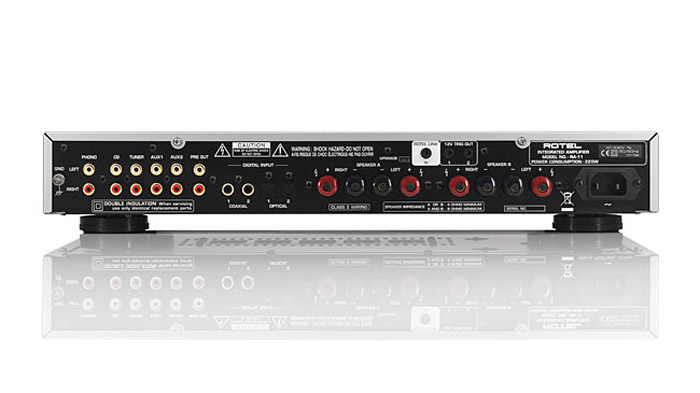 There’s a full-function IR remote control, a set of preamp outputs, 12V triggers for automation integration and a RotelLink input to allow the RA-11 to be connected to the matching RT-12 Digital Gateway.
There’s a full-function IR remote control, a set of preamp outputs, 12V triggers for automation integration and a RotelLink input to allow the RA-11 to be connected to the matching RT-12 Digital Gateway.
Want more? There are defeatable tone and balance controls, an LCD screen with adjustable contrast and brightness, and a degree of user control via a simple and easy to access menu system. On top of all that, the RA-11 is also well built and quite stylish, albeit in the typically purposeful Rotel fashion.
Sound Quality
Obviously, the feature set is pretty impressive considering the price tag, but so are the RA-11’s sonic abilities. There’s nothing cheap about any aspect of the sound quality – this amp sounds way more powerful than its 40-watt power rating. It’s got dynamics, resolution and speed aplenty along with a low noise floor and a rich tonal palette that allow it to be matched to some high-quality components.
While waiting for some inexpensive standmount speakers to arrive for review, I hooked the Rotel up to my Theophany M5 Series 2 floorstanders and Marantz SA8260 SACD player, and was more than a little surprised by how good the combination sounded. Whatever I played proved more than merely enjoyable. The overall sound isn’t what you’d call warm and rose tinted, rather, it’s got a matter of fact, unembellished character that doesn’t add to the recording, and despite that massive feature set’s theoretical impact on the bits that make the noise, it doesn’t subtract from it either.
Some might find the RA-11 to be a touch cold, a little too emphatic when a tad more subtlety is called for but others will like this amp’s drive and grip. Dynamic range is good even at low listening levels and resolution is commendably high. There’s a lot of bass control here too, which means that the 40 watts of power rocks out nicely, especially into sensitive speakers, where the Rotel sounds like a powerhouse. There’s no overt harshness to the delivery and no sign of compression except when it’s really pushed.
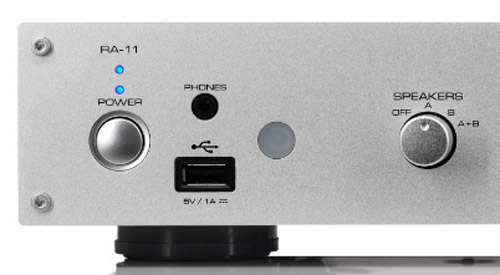
Hooked up to a set of $499 Q-Acoustics 2020i standmount speakers on matching stands using my most basic collection of cables, the RA-11 put on an entirely convincing performance, even when the SACD player was turned off and the Bluetooth dongle fired up.
The RA-11 is exceptional as a Bluetooth streamer. Pop the supplied dongle into the USB port, and the display states ‘Bluetooth Ready’. Pair a compatible device and the display switches to ‘Bluetooth Run’, and you’re ready to go. The RA-11 features a similar DAC chip to the one in Rotel’s RDD-06 DAC (reviewed here by Andy Baker) and while this particular implementation misses out on the high-resolution USB audio support, it makes Bluetooth streams sound rather good. Back to back comparisons with QED’s uPlay Plus Bluetooth receiver (reviewed here) showed that besides a small difference in volume levels, there’s nothing in it, which means that the RA-11’s wireless streaming capability is no mere afterthought.
There’s a decrease in the sound quality when you move from CD to a 320kbps Bluetooth stream, but in isolation the sound quality is just fine. Dropping to a Pandora stream makes for a further overall reduction in audio fidelity, but the lowered bitrate translates into a warmer character thanks to the decline in treble detail and energy. It’s entirely possible to spend hours, or indeed days listening to the RA-11 via Bluetooth only.
Considering that the system in Bluetooth mode involved the amp, a set of five hundred buck speakers and some cheap speaker cable, it delivered enough audio jollies to make even a high-quality compact wireless music system feel genuine terror and worthlessness. The only limitation is range – that little USB dongle can’t quite match the connectivity of a bigger antenna so it cuts out if you stroll too far away, but considering the fact that it’s basically “thrown in”, it’s hard to complain too vigorously.
As an aside, CD quality files from an iPod Classic run into the USB input sound terrific, with the digital stream matching the sound of a $1,000 CD player, which is yet another feather in the Rotel’s cap.
It’s always intriguing when a budget component proves to be good at many things and then it throws a curve ball by being great at something specific. In the RA-11’s case, it’s an imaging over-performer, generating a soundstage with precision. Via the big Theophany floorstanders, the Rotel placed performers deep behind the plane of the speakers and located them meticulously in space – quite a show considering that the M5’s aren’t the most precise of speakers in this regard.
Digital devotees will wonder if Rotel has bundled in a full-blown RDD-06 DAC sans computer USB. It sounds that way, as unlikely as this might seem at the price. The DAC was compared directly to the Marantz SA8260 via QED optical and Audioquest coaxial cables, and while the differences were slight, it’s tough to admit that I preferred the sound of the Rotel over the Marantz by a tiny margin. There was more air in the treble and the vocals were generally rendered with a fraction more detail and textural meticulousness. Considering how good the Marantz is, that’s extraordinary and bodes very well for punters with a serviceable but aging CD player that could use a bit of a resurrection. The missing USB computer audio functionality isn’t the end of the world at the price. Pedantic users could track down a USB to SPDIF converter and be sorted for high-res computer audio too, and with the right speakers, the little Rotel will let them hear the difference.
Conclusion
For not much more moolah, punters can grab Rotel’s RA-12 integrated amp, which is basically a taller version of the RA-11 with 60 watts of power. Assuming nothing sonic has been lost in translation, this model’s extra grunt will give a bit of extra headroom and the ability to drive less efficient speakers.
Then again, for a lot less dosh, Rotel offers the RA-10 integrated, which is a stripped version of the RA-11 – there’s no DAC and thus no USB or Bluetooth, no LCD screen and no remote, but it still packs the dual speaker outputs, headphone output, pre-outs and defeatable tone controls. Again, the RA-11’s inherent audio quality should still be there in spades, and if it is, then the baby of the range would be a good buy for those who just don’t need or want the flashy bits.
However, when it comes to being an absolutely stonking buy, the RA-11 is the bomb! There isn’t a weakness in this thing’s arsenal. It doesn’t sound better than the competition, so there are units at similar prices that’ll match it sonically (Arcam A19 and Cambridge Audio Azur A651A for example) or even sound a little more mellifluous (Myryad’s Z142), but they just can’t match the feature set and value for money on offer here.
At times, I was tempted to call up the agents and double check the price, and admittedly I did make sure online more than once. Running the budget Q-Acoustics 2020i standmounts as a DAC from the Marantz or set up as a Bluetooth streamer, the Rotel really did sound fine. With two different models of Theophany’s excellent floorstanders at around the $7K mark on the end, I was amazed by how well the Rotel held up its end of things. It stayed in the driving seat for weeks until time pressure forced me to move it on.
This is an unfeasible amplifier – it’s an excellent eleven hundred dollar amp packing two thousand bucks of functionality. There’s no real way it can be as good as it is for the price, considering how much it does. But don’t stop to second-guess either the prowess of the Rotel engineers or the probable lunacy of the local pricing, just go and grab one, especially if you’re into Pandora or Spotify and Bluetooth audio.
This is the current top contender for my product of the year. I know it’s only July, but someone is going to have to pull something bloody special out of the hat to top it. ASHLEY KRAMER
www.internationaldynamics.co.nz
NB – The RA-11 was reviewed at $1,049 but the price has since risen to $1,149. At that rate, it’s still a killer buy!

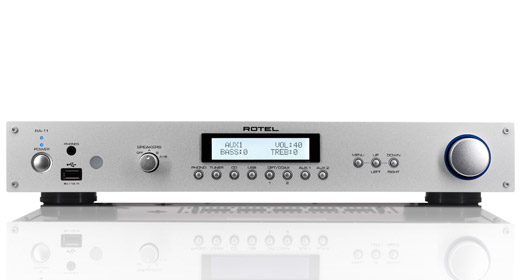




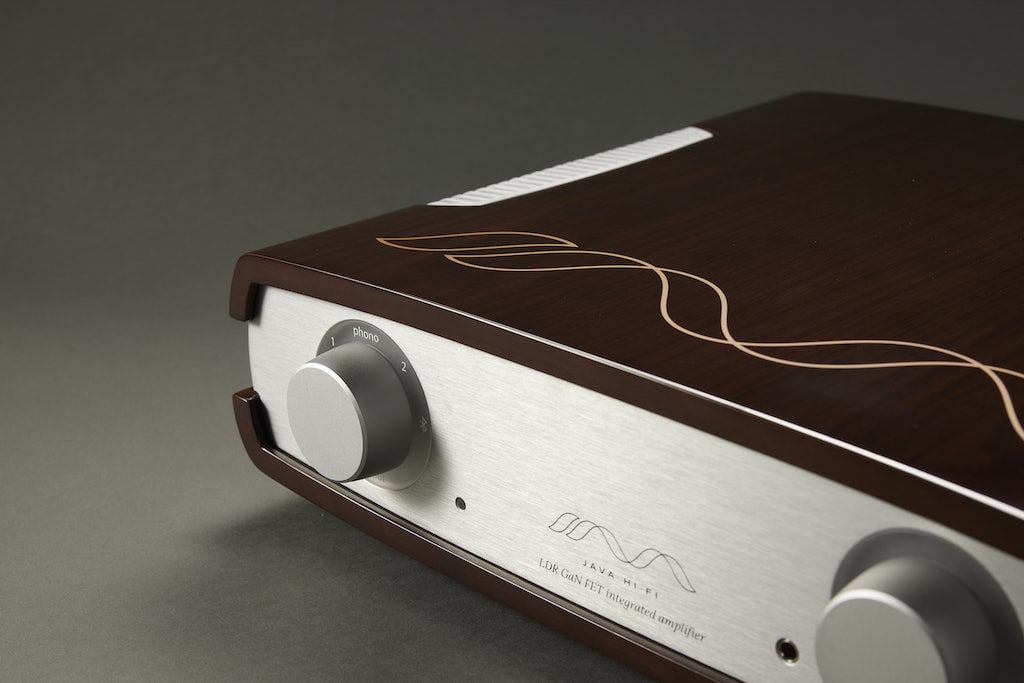
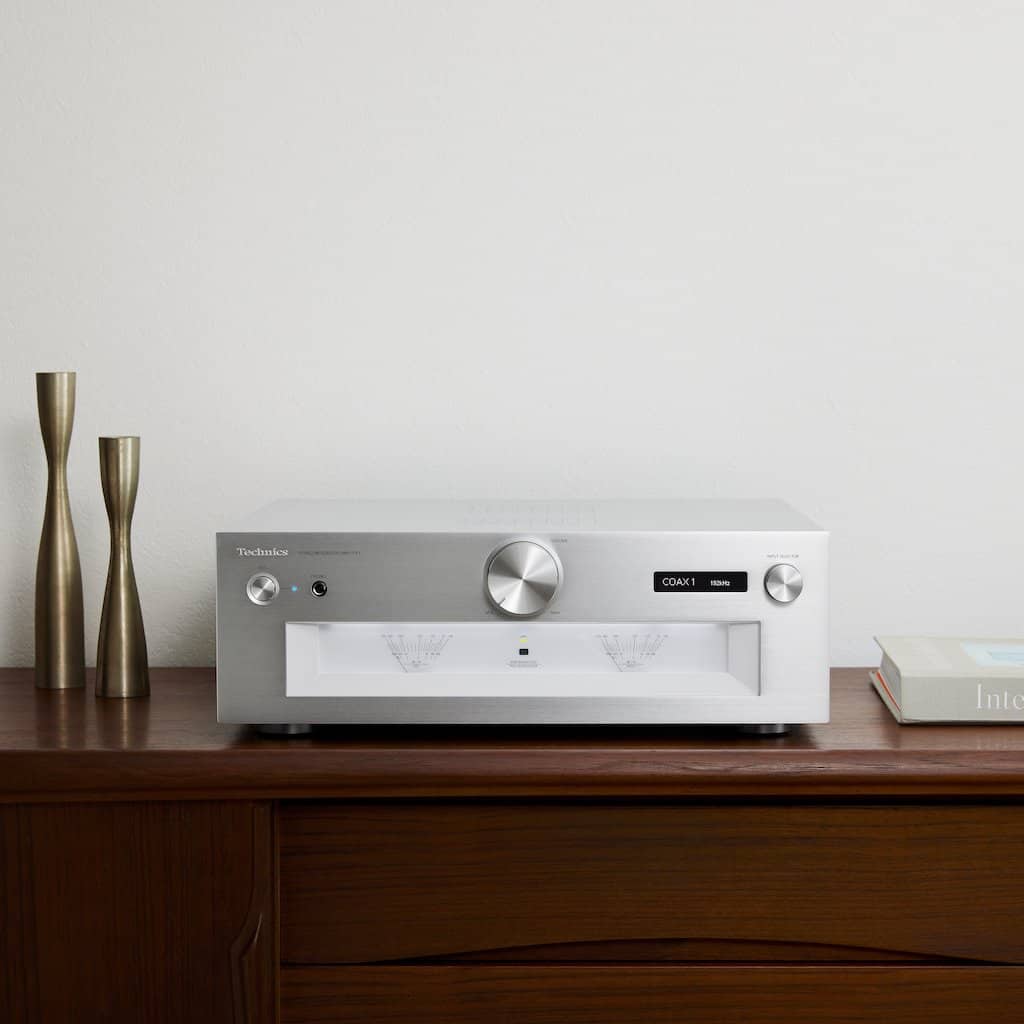
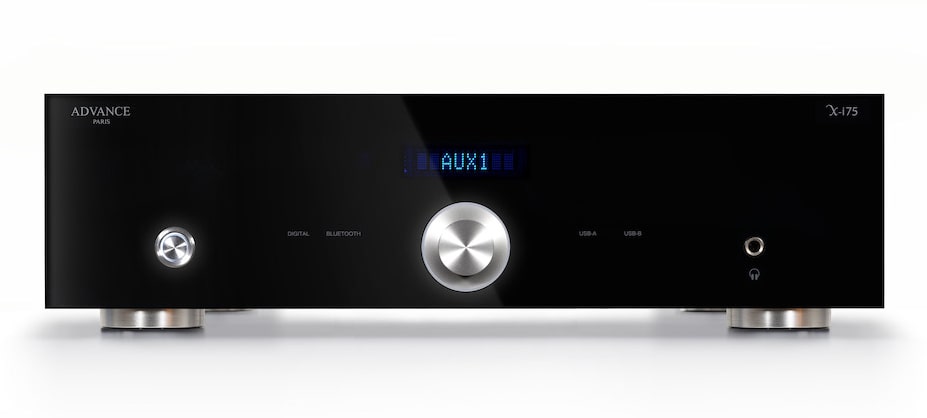

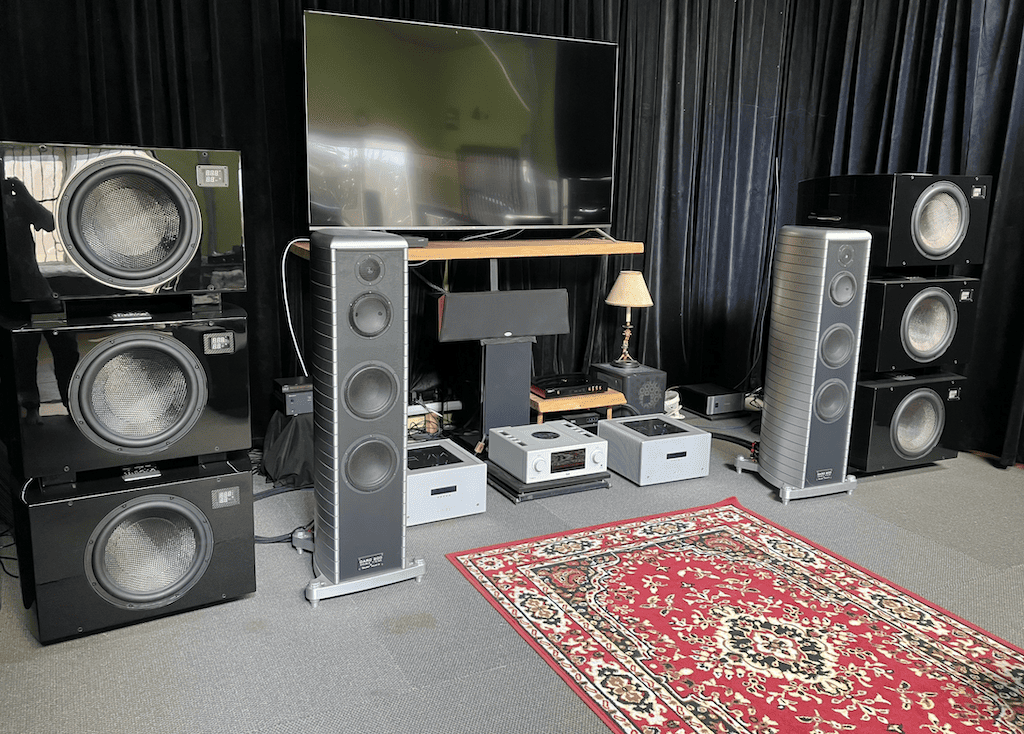

I have the 2050i floorstanders and a rega rp40. I’m stuck in making a decision on these three…rega brio r, arcam a19 and rotel ra11. Which of these would u recommend for my basic setup?
I have a Rotel RA-11 thee only thing that I don’t like is when I put a music USB in that has 200 songs and turn the system off when I turn it back on it goes back to the beginning of the USB I don’t know how to fix this problem
Hey,
I have a great deal on a second hand RA-11 amp and i want to know if it will be a good match with Wharfedale Diamond 220. The Wharf are a little laid back and Rotel is a little forward sounding as i know, so it could be a good combination.
Thanks in advance!